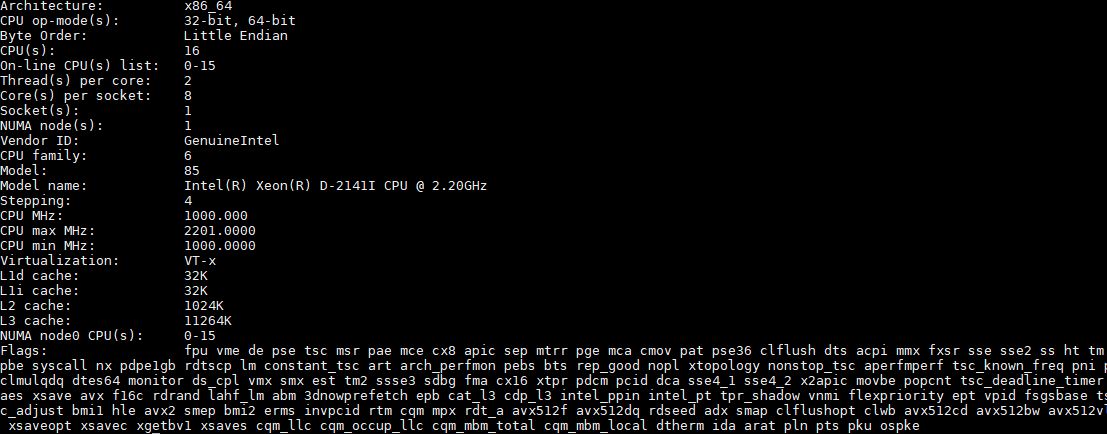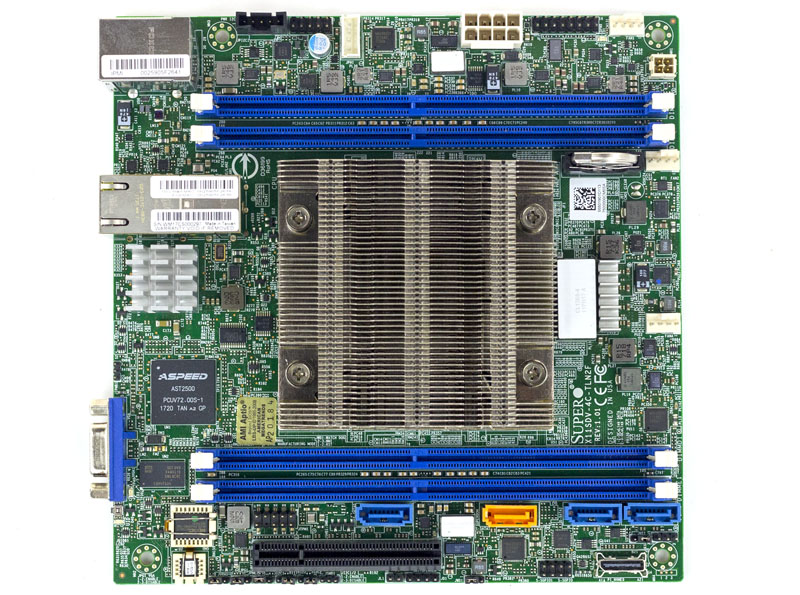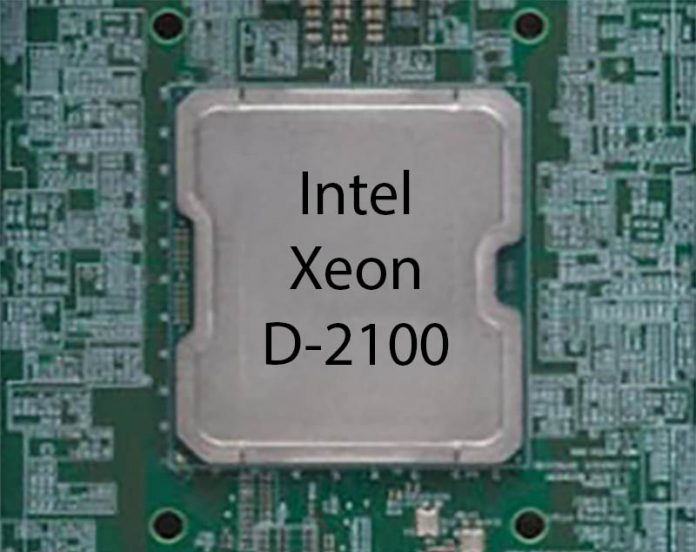Today we have our Intel Xeon D-2141I benchmarks as we wanted to fill in more of the Intel Xeon D puzzle after keen readers saw a few of the results in our AMD EPYC 3251 Benchmarks and Review. The Intel Xeon D-2141I is a SoC intended for edge deployments which is an application area that is set to explode. 5G network operators, as an example, want the ability to run some compute at the edge. The Xeon D-2141I is a good example of a SoC that has significantly more power and expansion capability in this generation to meet those needs while keeping the same instruction set as the higher-end Xeon Scalable family that runs in the data center. We think that this part is a better fit for many users that need more power than the Intel Xeon D-2123IT and less than the 16 core Intel Xeon D-2183IT.
Key stats for the Intel Xeon D-2141I: 8 cores / 16 threads, 2.2GHz base and 3.0GHz turbo with 11MB L3 cache. The CPU features a 65W TDP. This is a $555 price point which is in the mid-range of the embedded spectrum designed for virtualization. Here is the ARK page with the feature set.
Here is what the lscpu output looks like for the chips:

You can see avx512f, avx512dq, avx512cd, avx512bw, and avx512vl which are hallmarks of the Skylake family of Xeon processors. As we are going to see, the AVX-512 performance is not what Intel’s specs would lead you to believe.
Test Configuration
Here is our basic test configuration for single-socket Xeon Scalable systems:
- Motherboard: Supemicro X11SDV-8C-TLN2F
- CPU: Intel Xeon D-2141I SoC embedded
- RAM: 4x 16GB DDR4-2133 RDIMMs (Crucial)
- SSD: Intel DC S3710 400GB
- SATADOM: Supermicro 32GB SATADOM
The CPU itself supports up to 512GB of RAM, either in 128GB x 4 or 64GB x 8 configurations. One feature we would have liked to have seen on the Intel Xeon D-2141I is DDR4-2666 support. Even the Intel Xeon D-1500 generation’s update supported DDR4-2400 on most SKUs. This is a big step backward and Intel did not need to de-rate these parts. It actually created a major issue in our lab as we normally use Micron RAM for our reviews. We did not have any DDR4-2133 Micron RAM but we instead used Crucial DIMMs. Crucial is a Micron brand so it was the closest we could do to stay uniform.
Our ask for Intel is to stop playing DDR4 speed games with the embedded parts. If an embedded vendor wants to use lower clock memory to save on power in the field, let them. DDR4-2133 support in 2018 is downright silly segmentation.

Intel does not necessarily see the Intel Xeon D-2100 series as competition for its mainstream Xeon Scalable CPUs which makes sense. At the same time, we are going to use the mainstream CPUs as comparison points since we see a common question being around equating edge compute performance to mainstream data center processor performance. We are also going to have comparisons to the previous generation Intel Xeon D-1541 and some other embedded parts, including the 8-core AMD EPYC 3251.





I always hear a lot of hype about AVX-512 on STH. You show test results with Gromacs, so I went to gromacs.org. Not to my surprise they promote GPU acceleration. What I do find surprising is, that we never see performance figures from STH on Gromacs with Deeplearning 10 and 11 (12 is so new that we can’t expect that). To me it seems a bit that STH is pushing AVX-512 and the rest of the world couldn’t care less, they just don’t give a sh*t.
Misha, from what I understand, Intel is pushing AVX-512 in hopes that it will be utilized for 5G implementation, whatever that is… AVX-512 is useful for several different edge utilities, including specific networking encryption/decryption forms. However, the cost is that the AVX-512 FMA units push the processor harder resource wise and it has to compensate for that. It compensates by throttling the core speed of the chip.
So the real question is this: In a real edge environment, where there is a mixed workflow of different processor intensive tasks (web serving, firewall, local storage cache, all kinds of stuff), do clients want a “feature” that will help a small percentage (today) of the workflow, but do so at the cost of slowing the rest?
Personally, I think the AMD EPYC 3000 series is a slam dunk for what we need now. Intel is betting on future software moving most of the data to the FMA, AVX-512. We’re still waiting on everything to go multithreaded… lol
Micah, I know what intel is trying to do with AVX-512. What wonders me is that STH never showed the price performance between Gromacs on CPU + CUDA vs. CPU with AVX-512 and in almost every review Gromacs CPU vs. CPU with AVX-512.
Maybe the Xeon-D doesn’t clock down as much as the Gold 5000 series?